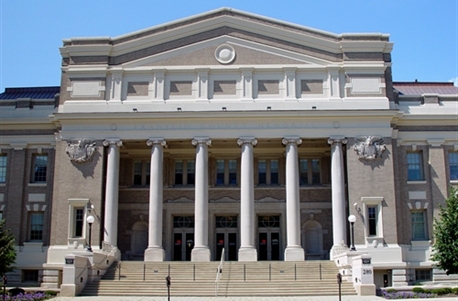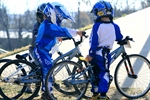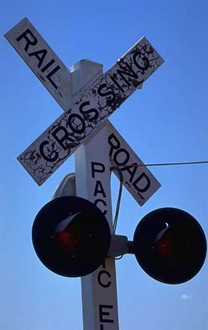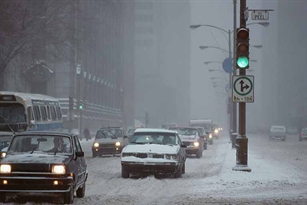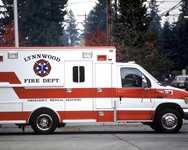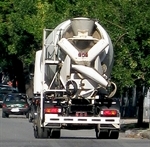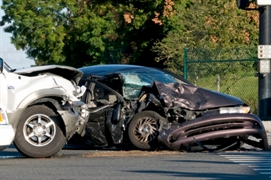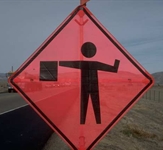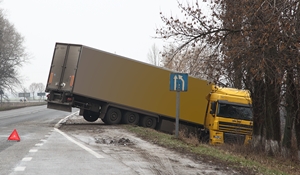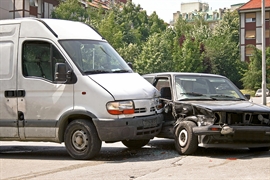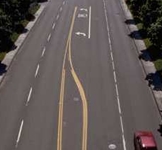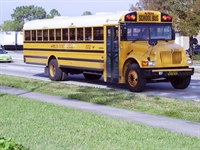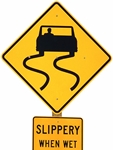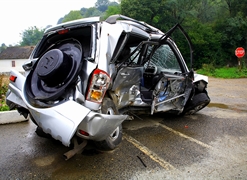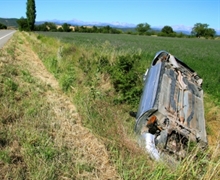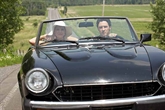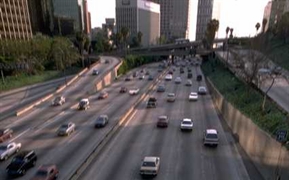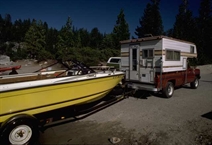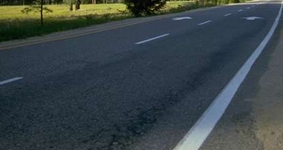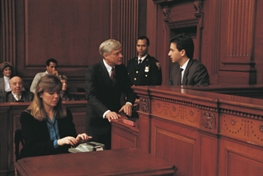James D. Madden, P.E.,
Forensic Engineering & Scientific Accident Reconstruction
Board Certified Diplomate Forensic Engineer
Over 30 Years Investigating, Analyzing, Reconstructing and Testifying about Accidents
440-838-0640, 440-832-9540
www.maddenar.com
Free Initial Phone Consultation
Fixed Fee Preliminary Accident Evaluation Available
www.maddenar.com
Free Initial Phone Consultation
Fixed Fee Preliminary Accident Evaluation Available
- to maddenforensicengineering.com
- Home - Traffic Accident Introduction
- Fees, CV, Contact, Additional Information
- Work Overview & Forensic Specialties
- Types of Accidents, Vehicles etc.
- Engineering Analysis & Issues
- Human Factors in Traffic Accidents
- Roadway & Traffic Control Safety & Standards
- Experience & Qualifications
HOME PAGE
TRAFFIC ACCIDENT INTRODUCTION
MaddenAccidentReconstruction.com
For more extensive coverage of the contents in this
website see the desktop version of:
www.MaddenAccidentReconstruction.com, covering general information, but limiting forensic specialty coverage to traffic accident analysis and reconstruction.
scroll down for page links on Table of Contents
Table of Contents below
- to maddenforensicengineering.com
- Home - Traffic Accident Introduction
- Fees, CV, Contact, Additional Information
- Work Overview & Forensic Specialties
- Types of Accidents, Vehicles etc.
- Engineering Analysis & Issues
- Human Factors in Traffic Accidents
- Roadway & Traffic Control Safety & Standards
- Experience & Qualifications
PRESS 'MORE OPTIONS' IN THE NAVIGATION LIST ABOVE TO GO TO MORE PAGES ON THE WEBSITE
James D. Madden, P.E. is our Senior Forensic Engineer, Accident Reconstructionist
and Engineering Expert Witness
and Engineering Expert Witness
James D. Madden, P.E., in his forensic engineering practice has*:
- completed over 1000 cases
- written over 600 reports
- written over 60 affidavits
- testified in over 90 depositions
- testified in over 75 trials
*count last made in 2007
Our work with Traffic Accidents and Vehicle Crashes
Our analysis includes assessment of adherence to the applicable Manual of Uniform Traffic Control Devices, which controls the use of traffic control devices on streets, roads and highways.
Traffic control devices include traffic control signals, roadway signs, painted lines on the pavement ("striping"), curbing, abutments, etc., used to control traffic patterns. The applicable Manual of Uniform Traffic Control Devices (MUTCD) covers the requirements for these devices and the acceptable application of these devices.
Traffic control is covered in more detail in the 'Highway, Street and Roadside Codes, Standards...' section in the Work Overview page.
Our work with Traffic Accidents and Crashes includes investigation and reconstruction of the accident to determine how the accident occurred, and how the factors associated with the accident, including pre-crash events, were related to the causation of the accident.
Our work also includes engineering analysis of the effects of driver actions, driver condition, vehicle condition, and weather, ambient light and lighting conditions on the accident.
Engineering analysis of the roadway design and condition and traffic control devices, and determination of the effect of these factors on the accident is also included in our work.
Our work also includes assessment of adherence to applicable codes, standards and recommended practices, including applicable highway and roadway design standards.
Engineering analysis of the roadway design and condition and traffic control devices, and determination of the effect of these factors on the accident is also included in our work.
Our work also includes assessment of adherence to applicable codes, standards and recommended practices, including applicable highway and roadway design standards.
Our analysis includes assessment of adherence to the applicable Manual of Uniform Traffic Control Devices, which controls the use of traffic control devices on streets, roads and highways.
Traffic control devices include traffic control signals, roadway signs, painted lines on the pavement ("striping"), curbing, abutments, etc., used to control traffic patterns. The applicable Manual of Uniform Traffic Control Devices (MUTCD) covers the requirements for these devices and the acceptable application of these devices.
Traffic control is covered in more detail in the 'Highway, Street and Roadside Codes, Standards...' section in the Work Overview page.
Our investigation of Traffic Accidents includes, when appropriate, inspection of the accident site and the accident vehicles and many other items as listed under 'Our Engineering Analysis' on the 'Engineering Analysis...' page.
We have investigated and reconstructed a very broad range of accident types involving a very broad range of accident vehicles and other participants, including pedestrians of a wide range of ages and bicyclists and motorcyclists. The details of the accident types and vehicles and persons are included in the 'Examples of Types of Traffic Accidents Analyzed' section and 'Examples of Vehicles and Persons Involved' section in the ' Types of Accidents...' page.
Our work with Traffic Accidents and Crashes is a forensic engineering activity based on accepted engineering standards and practices and the science of Engineering Mechanics, the science of real-world movement ('dynamics') and forces.
Scientific Accident Reconstruction used in reconstructing traffic accidents is derived from general Engineering Mechanics, as specialized by engineers for reconstructing traffic accidents.
Engineering Mechanics is the practical engineering science derived from the theoretical science, physics, and is the basis for the calculation techniques and equations used in traffic accident reconstruction.
The formal education of our Senior Accident Reconstructionist, James D. Madden, P.E. in Engineering and Engineering Mechanics has been augmented with a broad range of courses in Traffic Accident Investigation and Reconstruction taken at the Northwestern University (NU) Traffic Institute and elsewhere, with additional courses taken in Crash Data Retrieval acquisition and analysis at NU's Center for Public Safety. These courses are listed in the 'Coursework ...' section and related sections of the ' Experience and Qualifications' page.
Scientific Accident Reconstruction used in reconstructing traffic accidents is derived from general Engineering Mechanics, as specialized by engineers for reconstructing traffic accidents.
Engineering Mechanics is the practical engineering science derived from the theoretical science, physics, and is the basis for the calculation techniques and equations used in traffic accident reconstruction.
The formal education of our Senior Accident Reconstructionist, James D. Madden, P.E. in Engineering and Engineering Mechanics has been augmented with a broad range of courses in Traffic Accident Investigation and Reconstruction taken at the Northwestern University (NU) Traffic Institute and elsewhere, with additional courses taken in Crash Data Retrieval acquisition and analysis at NU's Center for Public Safety. These courses are listed in the 'Coursework ...' section and related sections of the ' Experience and Qualifications' page.
Our work with Traffic Accidents and Crashes includes appropriate involvement of Human Factors as this relates to the capabilities and actions of the vehicle drivers and other participants. See the 'Human Factors' section of the Experience and Qualifications page
for further discussion of Human Factors, and its use in Accident Reconstruction.
Aspects of Traffic Accident/Crash Investigation, and transition into Reconstruction (not all inclusive)
- accident site inspection, measurement and photography
- inspection, measurement and photography of damaged vehicles and vehicle components
- inspection of vehicle lamps (headlights, taillights, etc.) and lamp filaments, when appropriate
- sight distance and nighttime visibility studies
- skid testing of vehicles and determination of "drag" factors
- accident sight photogrammetry • graphical photogrammetry from photographs (transitioning into Reconstruction)
Aspects of Traffic Accident/Crash Reconstruction (not all inclusive)
- study and consideration of accident evidence and data available from other sources, including police accident investigations, Crash Data Retrieval from the vehicles, and statements and testimony of witnesses
- evaluation of roadway surface condition, skidmarks, yawmarks, scuff marks, other tiremarks, gouges, other roadway and off-roadway surface damage, and debris
- evaluation of vehicle and vehicle component damage, including evaluation of vehicle lamp and lamp filament condition to determine if lamps were on at collision
- evaluation of mechanical injuries to pedestrians and vehicle occupants
- evaluation of roadway design and pre-accident condition (for safety) and traffic control devices, such as lane lines, warning and other signs, traffic control lights and other signals (for suitability)
- preparation of scale site drawings, and use in accident analysis
- determination of the pre-collision movements of vehicles and pedestrians in relation to time, distance and each other (time-distance studies)
- engineering analysis of the movements (dynamics) of vehicles, pedestrians, and vehicle occupants during an accident, relative to each other, and relative to fixed items in the accident area, such as utility poles
- determination of acceleration and maneuverability capabilities of vehicles, particularly related to possible accident activities
- complete traffic accident reconstruction, manually and/and by computer, to address the required issues
As part of the Engineering Analyses of Traffic Accidents and Crashes we address the following issues , and others, when appropriate:
- speeds of vehicles at various points before and during an accident
- locations of vehicles, pedestrians, bicycles, etc., before and at various times during an accident
- sight distance, nighttime visibility and weather-impeded visibility
- appropriateness of roadway design and traffic control devices (such as lane lines, warning and other signs, and traffic control and pedestrian control signals), and their relation to an accident
- the relation of the condition of roadway facilities to an accident, including drainage issues related to water and/or ice on the roadway
- answers to questions, such as:
- Were all vehicles moving at collision? If not, which ones were moving and stopped?
- Which vehicle was left of center first, and also at collision?
- Were the headlights and/or other vehicle lights on at collision?
- What was the accident causation?
- Did the roadway configuration, construction or condition cause or contribute to the accident?
- What was the relation of the accident factors to the accident causation?
- Could the accident have been avoided by any participant in the accident?
Qualifications of James D. Madden, P.E., Senior Forensic Engineer
The qualifications of James D. Madden, P.E., Senior Forensic Engineer,
Consulting and Testifying Forensic Engineer
and
Accident Reconstruction Engineer,
are listed on the ' Experience & Qualifications' page.
Contact us to discuss your case by phone at NO CHARGE . This consultation can be scheduled in advance to meet your schedule.
Download Curriculum Vitae
Download a Summary or Detailed
Curriculum Vitae (CV) / Resume'
for James D. Madden, P.E. from the desktop version of maddenfe.com or maddenaccidentreconstruction.com
Contact us by email, phone or mail for information on our fees or to receive a Fee Schedule, or the Resumes/Curricula Vitaes
Additional Information
Additional information is available on the desktop version of: maddenfe.com or
maddenaccidentreconstruction.com
maddenaccidentreconstruction.com
MAAIR
Copyright 2015, 2019, 2020, 2022 by Madden Accident Analysis, Investigation, Reconstruction and James D. Madden, P.E., BCDFE. All rights reserved. This website contains photographs which are licensed with restrictions that prohibit any downloading, reproduction, re-publication or re-transmission .

